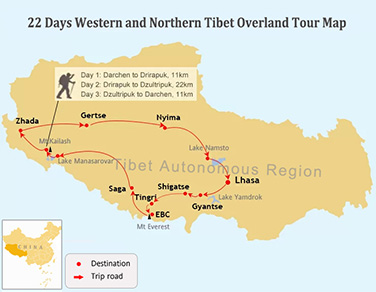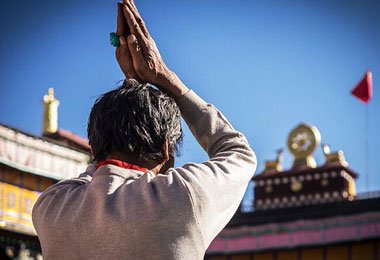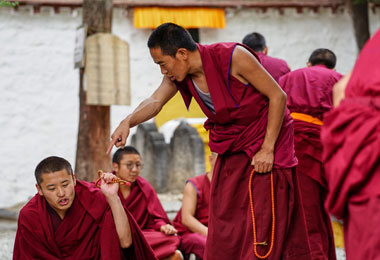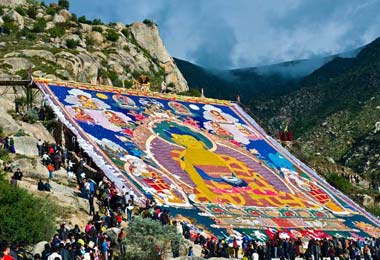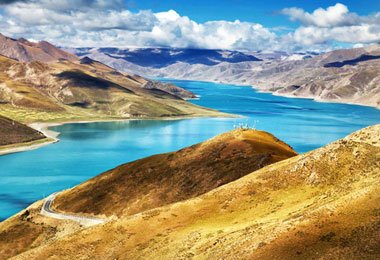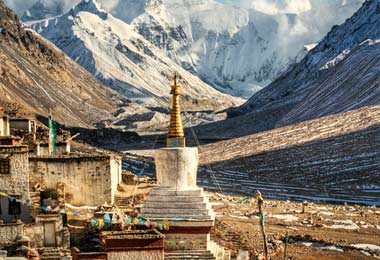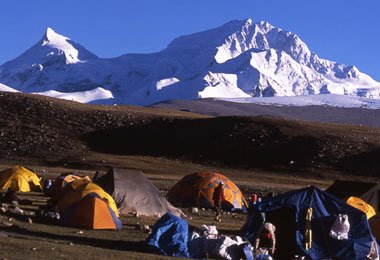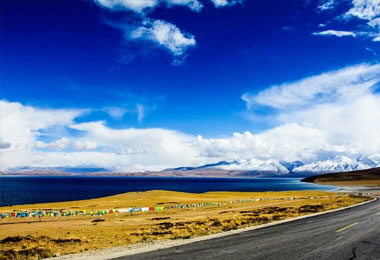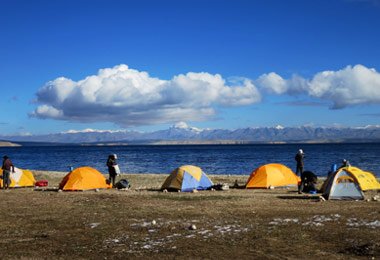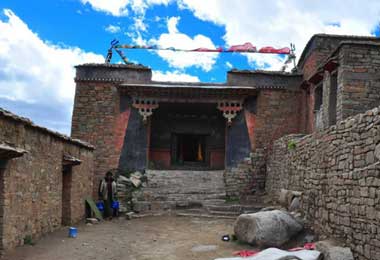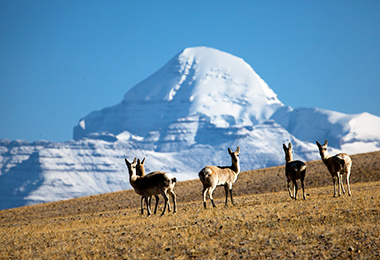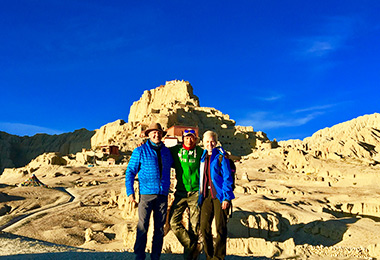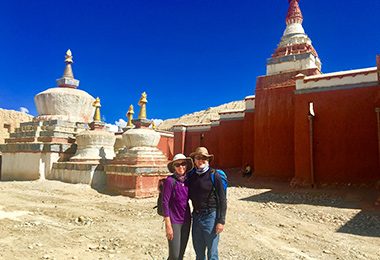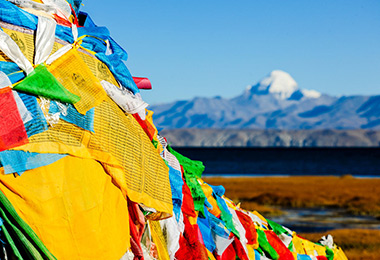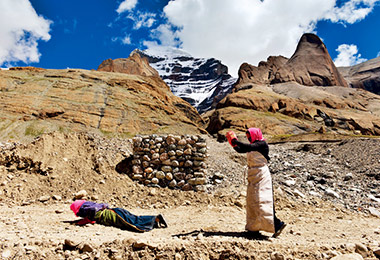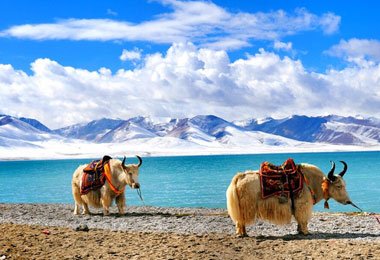
22 Days Western and Northern Tibet Overland
(TTK005 ) Lhasa-Gyangtse-Shigatse-Mt.Everest-Manasarover-Mt.Kailash-Guge-Ali-Gegye-Gertse-Dong tso-Nyma-Banger-Namtso Round tour
-
Tour Type:
Escorted by private guide and vehicle; leave 365 days a year!
-
Trip Level:
Easy - suitable for all levels of fitness, family with kids and senior groups.
-
Trip Level Guide:
- Easy - suitable for all level of fitness, family with kids and senior groups.
- Moderate - suitable for ones with average level fitness, family with kids bigger than 12 yrs.
- Moderate to Strenous - suitable for ones physically fit; have experiences of high altitude trek.
- Strenuous: suitable for adventures and individual with physically fit and healthy.
-
Season:春
Spring夏
Summer秋
Autumn冬
Winter
Overview
The most challenging route in Tibet covers most area of the middle, western and northern Tibet, including the rarely visited uninhabited land- North Qiangtang wild Land, which is a paradise of more than 230 species of wild animals, including the wild yak, wild donkey, white-lip deer, brown bear and the endangered Tibetan antelope or chiru. This route will take you to explore the rich Tibetan cultural heritages in the three cultural tourist cities: Lhasa, Shigatse and Gyantse, and have an eyeful of the ever-changing natural scenery on the Tibet highland, for instance, the majestic ranges and snow-capped peaks, and the beautiful holy lakes, such as the well-known Yamdrok, Manasarovar, Namtso, Selin-tso and Dangreyong-tso. Of course, you will witness two most significant historical sites in Tibet, the world-known Potala Palace and the mysterious ruins of Guge Kingdom. In a word, this route is a collection of the best of Tibet.
At a Glance
Day 1Arrival – Lhasa (3650m)
Day 2Lhasa Sightseeing - Potala Palace and Johkang Temple(B)
Day 3Lhasa sightseeing-Sera Monastery and Drepung Monastery(B)
Day 4Move forward to Gyantse County(300km)
Day 5Move to Sakya Monastery:Tashilhunpo monastery,sakya monastery
Day 6From Sakya moving towards the famous Rongpuk Monastery
Day 7Drive to Sagar County(290km):Mt. Everest,Shishapangma
Day 8Move Saga to Lake Manasarovar(500km)
Day 9Spend a day around Manasarovar lake, Then to Darchen to prepare your trekking(30km)
Day 10Trek day one(Outer circuit), Darchen to Drirapuk 11km
Day 11Trek day two, Drirapuk to Dzultripuk 22km
Day 12Trek day three- Dzultripuk to Darchen-11km:Milarepa's cave
Day 13Darchen to Zanda, visit Guge Kingdom and Torling Monastery
Day 14Zanda to Sanggye khabab(Ali)
Day 15Sanggye khabab-Gegye-Gertse
Day 16Gertse to Dong Tso to Nyima (400km),DongTso Lake, Grassland, wild Animal
Day 17Nyima to Dangra Yumtso
Day 18Dangra Yumtso to Nyima
Day 19Nyima to Kanglung Tso to Selin Tso
Day 20Selin Tso to Banger to Namtso
Day 21Namtso-Lhasa
Day 22Leave Lhasa to your next destination by train or by flight
Day to Day Itinerary
Day 1: Arrival – Lhasa (3650m)
Transfer to Lhasa downtown after arriving in Lhasa airport or train station. Have a good rest to acclimatize the high altitude.
Stay overnight in Lhasa
Day 2: Lhasa Sightseeing - Potala Palace and Johkang Temple(B)
In the morning, visit the most splendid museum, the Potala Palace, and explore the grandest of its myriad chapel. You will appreciate the jeweled burial chorten of past Dalai Lamas as well as statuary, frescoes and paintings.
Later visit the Jokhang Temple, which is considered as the most sacred temple in Tibet. It draws tremendous number of pilgrims from all over Tibet each year for it houses a magnificent image of Sakyamuni at 12 years old.
Then stroll around Barkhor, a pilgrimage circuit that encircles the Jokhang, and it also serves as the biggest bazaar in Lhasa, where you can find some handicrafts, ambers, jewelry, Tibetan clothes, ect.
Stay overnight in Lhasa
Day 3: Lhasa sightseeing-Sera Monastery and Drepung Monastery(B)
Explore Tibet's two greatest monasteries, Drepung and Sera, which once housed about 10,000 monks. Drepung monastery is situated at the foothill of a mountain and was founded by Jamyang Choeje in 1416. The monastery is divided into two different colleges, that is, Drepung loselling and Drepung Gomang college. The Ganden podrang is famous among them as it is the government centre and later moved to the famous Potala palace during fifth Dalai lama. In the afternoon, explore the Sera monastery which was founded in 1419 by Tsongkapa's disciple Jamchen Choeje.
The whole monastery is divided into two colleges and there are Sera 'jhe' and Sera 'may' respectively. Among them there is 'Tsokhang chenmo', where the monks from all the colleges assemble and pray together. You can also see monks debating in the courtyard at around 6-7:30 in the afternoon. (Note: if you don't feel tired, you can try the Kora (Circling around the religious sites) Drepung and Sera monastery.)
Drive back to your hotel.
Day 4: Move forward to Gyantse County(300km)
Leave early in the morning and in about one and a half hour way, there is a county called "chushor"quxu in Chinese, where we will move towards the lhokha (shannan) prefecture. A few kilometers from chushor, there is the famous kangpa-la pass with 4700m. From the top of the pass in clear weather, you can see the fabulous shade of deep torquoise. Yamdrok-yutso is shaped like coiling scorpion with deep blue in color. The huge massif of mount Nanchan kangtsang(7191m) is in the distance.
Just a few kilometers driving through the shore of lake yamdrok tso, we reach Nangartse county and it is the largest town on the lake side and a popular stop for the night. Leaving yamdrok-tso is as spectacular as arriving, since you have to cross the 4960m karo-la with its awesome roadside views of the Nanchan- Kangtsang glacier. It was here that Young husband's British troops clashed with Tibetan forces to Lhasa en route. Then reach to our day's final destination-Gyantse. The Kubum Monastery is the town's foremost attraction. The 35m-high chorten(stupa) with its white layers trimmed with decorative stripes and its crown-like golden dome, is awe-inspiring. You can visit every chamber in the monastery. The Kubum means 100,000 images in Tibetan.
Stay overnight in Shigatse
Day 5: Move to Sakya Monastery:Tashilhunpo monastery,sakya monastery
Visit Tashilhunpo monastery in the morning. Tashilunpo is one of the six great Gelukpa institutions and was founded in 1447 by a disciple of Tsongkapa. Advancing towards the Sakya county, you can visit the sakya monastery. You will cross the Tso la pass (4410m) on the way and on the long descent from this pass, the Sakya bridge is visible in the distance.
The sakya county is 21km from the friendship highway. The sakya tradition is one of the four main Buddhist schools in Tibet. It was from here that the whole Tibet was governed during the period of Sakya hegemony and even now there are buildings of historic importance to be seen. You can see the largest book in the world in Sakya's great library written in gold.
Stay overnight in Sakya
Day 6: From Sakya moving towards the famous Rongpuk Monastery
It is not easy to get to Everest Natural Preserve. You need two permits to visit base camp. The first is the usual PSB travel permit and the second, a park-entry permit for Everest nature preserve, can be brought at Qomolangma nature preserve San chen guesthouse in shekar or the snow leopard guest house in old Tingri. The permit costs 400Y per vehicle, plus 180Y per passenger. Your passport and PBS permit will be checked at the checkpoint 6km west of Shegar.
Dangers and annoyances: Whatever you do, don’t attempt to walk to Everest base camp directly after arriving in Tingri from low altitudes of the Katmandu valley. The altitude gains of over 2600m leaves most people suffer from acute mountain sickness, also called altitude sickness. It’s important to carry warm clothing, some kind of rain gear no matter what time of year you visit and there is no rescue service in the shadow of mount Everest.
Stay overnight in Rongpuk Monastery
Day 7: Drive to Sagar County(290km):Mt. Everest,Shishapangma
We need to take the old Tingri road to Sagar county. From the old Tingri, you can see the mount Everest and Shishapangma at 8012m, which is the least of the world's 8000m peaks to be climbed. The road condition worsens from old tingri and runs parallel to the Himalayan ranges and Nepalian sides called Anapurna ranges.
The main road passes through the desolate plain of Digur tang, with its enormous sand dunes and the closely neighboring snow peaks of Shishapangma and langtang to the south. Leave the BUM-CHU basin, and then descend into the depression of pelkhu tso (4600m), a cobalt blue lake. Saga county is only 69km from the Phelgu tso and spend a night in sagar town.
Day 8: Move Saga to Lake Manasarovar(500km)
You are moving towards the Drongpa county. The region around the sources of Brahmaputra river is about 167km from the sagar town. Then you will reach a tiny dusty town on the main road with a couple of basic guest houses, restaurants and a small monastery called "old Drongpa".
Around the monastery, you can see a pile of yak heads which is carved with "sutras" and "mantras" like "OM MA NI PAD MEY HUM”, which is mantra of god of compassion. And new Drongpa is a small town with a couple of shops, hotels and restaurant is about 25km apart from the old drongpa. Move towards the Baryang with 4750m above sea level and drive to Lake Manasarovar.
Camping by the lake
Day 9: Spend a day around Manasarovar lake, Then to Darchen to prepare your trekking(30km)
Relax around the lake shore and explore the natural beauty of the lake. In summer, flocks of swans will gather on the lake, bringing grace and life to the area. You can not only see many Tibetans and Hindus praying and circling around the lake shore for the whole day, but also see snow-capped mountains on the background and hundreds of swans gather on the lake will attract hundreds of thousands tourists from all over the world.
Day 10: Trek day one(Outer circuit), Darchen to Drirapuk 11km
Traditionally, pilgrim undertakes 52 km trekking circuit around mount kailash, commencing at darchen(4574m) and crossing the Dolma-la pass on the second day. Darchen is the starting and completion point for the general circuit of the sacred mount. A few kilometers after leaving Darchen, there is a valley called "sarshung" where porters are waiting for their client.
They will help the client to take every necessary thing on yaks and horses. After two hours, you came upon a grassy plain with populated by nomads. You can refresh yourself in nomadic tent by drinking some soft drinks. From this turn in the valley, it is another two hours at least before reaching Drirapuk(4920m). You need to camp or rest in monastery's guest house, made from cement with little bit good facilities than others in Drirapuk. At the opposite side of Drirapuk, you can see small monastery with its guest house little bit cleaner than others.
Camping
Day 11: Trek day two, Drirapuk to Dzultripuk 22km
Day two: The second day is the hardest and most tough circuit with the Dolma-la pass lies 6.4km ahead but 762m above Drirapuk. The peak of Dolma-la pass is about 5630m above sea level, so it is better to set off early in the morning as the sun's ray break over the ridges. After taking a rest on the peak of Dolma-la pass, you will descend staircase to Lhachu valley floor, about one hour from the pass. It is still four hours trekking to get to the final destination with no shelters in between. It is better to walk on the right side of the river and finally reach to Dzultripuk(miracle cave of milarepa). It is advised to get there before other groups because of limited number of rooms available in Dzultripuk. Take a good rest in the guest room and prepare for next morning's departure.
Camping
Day 12: Trek day three- Dzultripuk to Darchen-11km:Milarepa's cave
The tour guide will arrange your time and ask him/her to visit the caves and the temples and shrines that have been built around Milarepa's cave. Then walking back to Darchen is easy and the exit from the valley can be reached within three hours. At the ending point of valley, the driver will take you back to Darchen.
Stay overnight in Darchen
Day 13: Darchen to Zanda, visit Guge Kingdom and Torling Monastery
It is about an eight-hour driving from Darchen to zanda, though the distance is only about 243km. After several hours of zigzagging down and up fantastically eroded gorges and gullies, we enter wider Sutlej Valley and finally reach Zanda after crossing a bridge. Tsamda county is the current name for the region and was known as Guge kingdom. The capital of the county is located at Toling. Toling monastery, founded by Richen zangpo in the 10th century, was once Ngari's most important monastic complex.
It was due to the influence of Richen Zangpo that Toling became the main religious centre of Guge kingdom after inviting the great Indian master ATISHA. The kings of GUGE replaced the city as a political centre of power by establishing capital slightly closer to the Indo-Tibetan trade routes. But the monastery is still an important cultural heritage of Ngari.
Stay overnight in Zanda
Day 14: Zanda to Sanggye khabab(Ali)
Explore various landscapes on the way to Ali. The capital of Ngari prefecture has nothing special to visit but it is a good place to clean up. Indus river is derived from mount Kailash and flows through this region and finally towards into Pakistan. Sanggai-khabab, the capital of Ali prefecture is a modern city with centre of administration, business and shopping.
Take a rest for one night.
Day 15: Sanggye khabab-Gegye-Gertse
Drive eastwards from Ali to Gegye(115km), there is nothing much to see but is a good place to clean up. From Gegye to Gertse, you will cross the infant Indus river and then soon enter a marshland with an abundance of birdlife, including golden ducks and large black-necked cranes.
Day 16: Gertse to Dong Tso to Nyima (400km),DongTso Lake, Grassland, wild Animal
Set off in the morning for Nyima, a small town in north Tibet. The road of Gertse to Nyima is muddy and we need almost one day to reach there. On the way, you can explore the nature of Qingtang Grassland and lakes.
Day 17: Nyima to Dangra Yumtso
In the morning, leave for Dangra YumTso. Dangra Tso is 4500m above sea level and the home to many wild animals, such as wild donkey, Tibetan antelope, and wild deer etc. The lake is also a divine lake to the local Bonpa believers. You can expect a warm hospitality when engaging with the locals who are in very unique costumes.
Camping by Dangra YumTso
Day 18: Dangra Yumtso to Nyima
The rest of the day in Dangra Tso before transferring back to Nyima in the afternoon, you can hike along the lake to take lots of photographs in the morning.
Stay overnight in a basic guesthouse or camping
Day 19: Nyima to Kanglung Tso to Selin Tso
On the way to Selin Tso, you can see much rare wildlife. Make a stopover at Kanglung Tso lake (4500m) en route. Selin tso is Tibet's second largest lake, and the world's largest black-necked crane nature reserve. Today is a 6-8hrs drive.
Stay overnight in a basic guesthouse or camping
Day 20: Selin Tso to Banger to Namtso
It takes eight hours from Selintso to Namtso. The road is still bumpy and muddy, especially after Banger tso. The 4WD drive camp the mountains every soon and has to cross the rivers and mud ponds.
Stay overnight at the lake shore of Namtso
Day 21: Namtso-Lhasa
Namtso lake means "Heaven Lake" in Tibetan. It is one of the three holy lakes of Tibet and the highest lake in the world with an elevation 4,718 meters above sea level. With a length of 70 kilometers from west to east and a width of 30 kilometers from north to south, it covers an area of 1,920 square kilometers. Namtso is acclaimed to be the largest lake in Tibet and the second largest salty lake in China. Explore along the lake for a half day. You can hike from camp on the Tashi Island along the lake shore for several kms.
Drive to Lhasa after lunch.
Day 22: Leave Lhasa to your next destination by train or by flight
Our tour guide and driver will see you off at airport or train station to end the pleasant and taxing journey.
Service Guide
Service Included:
- Tibet travel permit and all other necessary permits to Tibet;
- All entrance ticket fees for all tourist sites listed in the itinerary;
- Personal knowledgeable English-speaking Tibetan local tour guide;
- Personal comfortable, clean and safe vehicle with reliable Tibetan local driver; vehicle ranging from 4WD land cruiser to minibus depending on your group size;
- All lodging listed in the itinerary; it’s your decision about the accommodation class: luxury 5-star international hotel, comfortable 4-star hotel, economic 3-star hotel or budget hostel, guesthouse or tent. Please tell us your accommodation preference when submitting the enquiry; we will arrange the best-value hotels for you.
- Domestic flight/train tickets listed in the itinerary;
- All meals listed in the above itinerary;
- Tourist accident/casualty insurance;
- First aid kit;
Service Excluded:
- International flight to and out of China;
- Chinese visa (Note: we could help you with the Chinese visa application, like providing the invitation letter, presenting the hotel or domestic flight reservation copies, etc that you may need. )
- Domestic flight/train not listed in the itinerary. (We can provide you the domestic flight/train ticket booking service at the BEST discount price; please contact us our travel experts for the details.)
- Meals not specified in the itinerary; usually it costs about USD3-15 per person for one meal in TAR (Tibet Autonomous Region).
- Tips and gratitude to tour guide and driver;
- Personal expenses, like laundry, phone call, snacks, soft drinks (please do the best to avoid the alcoholic beverages during your Tibet trip), optional tour activities, etc.
Contact us for your dream trip now !
Enquire NowYou May Also Like
-
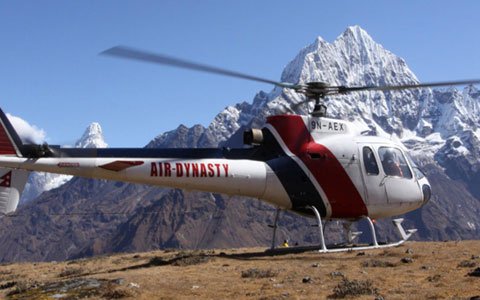 11 Days Tibet Kailash Pilgrimage Tour by Helicopter from Nepal
11 Days Tibet Kailash Pilgrimage Tour by Helicopter from NepalKathmandu - Nepalgunj - Hilsa - Purang - Manasarovar - Darchen - Kailash - Purang - Nepalgunj - Kathmandu
-
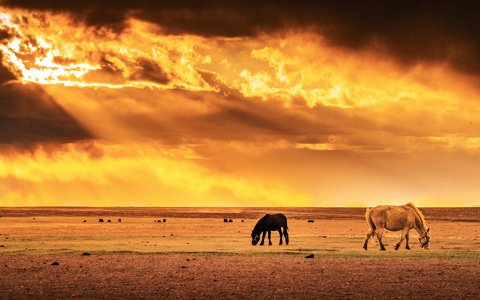 16 Days Tibet to Xinjiang Land Trip
16 Days Tibet to Xinjiang Land TripLhasa - Shigatse - Sakya - Saga -Mt.Kailash - Zanda - Ali - Pangongtso - Dorma - Dahongliutan - Mazar - Yecheng - Kashgar
-
 22 Days Travel to western Tibet from Nepal
22 Days Travel to western Tibet from NepalKathmandu-Lhasa-Namtso-Ali-Guge Kingdom-Darchen-Lake Manasarovar-Peiku-tso Lake-Gyirong Port
-
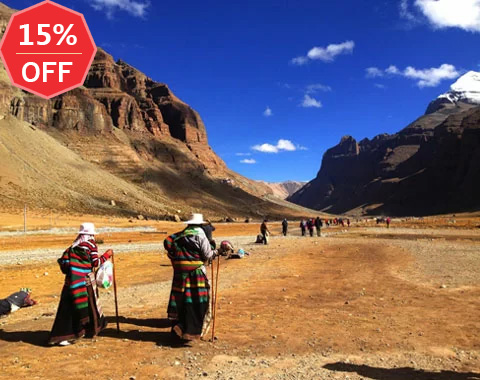 17 Days Kailash Manasarovar Tour & Guge Kingdom Exploration
17 Days Kailash Manasarovar Tour & Guge Kingdom ExplorationLhasa - Gyantse - Shigatse - Everest Base Camp - Saga - Darchen - Kailash Kora (3 days) - Guge Kingdom - Manasarovar - Saga - Sakya - Shigatse - Lhasa
Most Frequently Asked Questions from our Clients

This is an adventurous route in western and northern Tibet. The average altitude is 4500 meters above sea level, which has a reputation of the roof of the world. Such impression of Tibet is what many people have in their minds.
Tibetan Travel Guru,Master Kungga Dundruk
Get A Quotation of this Tour
Get Started - 22 Days Western and Northern Tibet Overland
You’re getting closer to your dream Tibet vacation! Fill out this form so our travel designers can start helping you plan a trip.
Privacy Policy: Your information is kept strictly confidential. Tibet Vista will never sell, trade, or give away your contact information to a third party.

.jpg)


